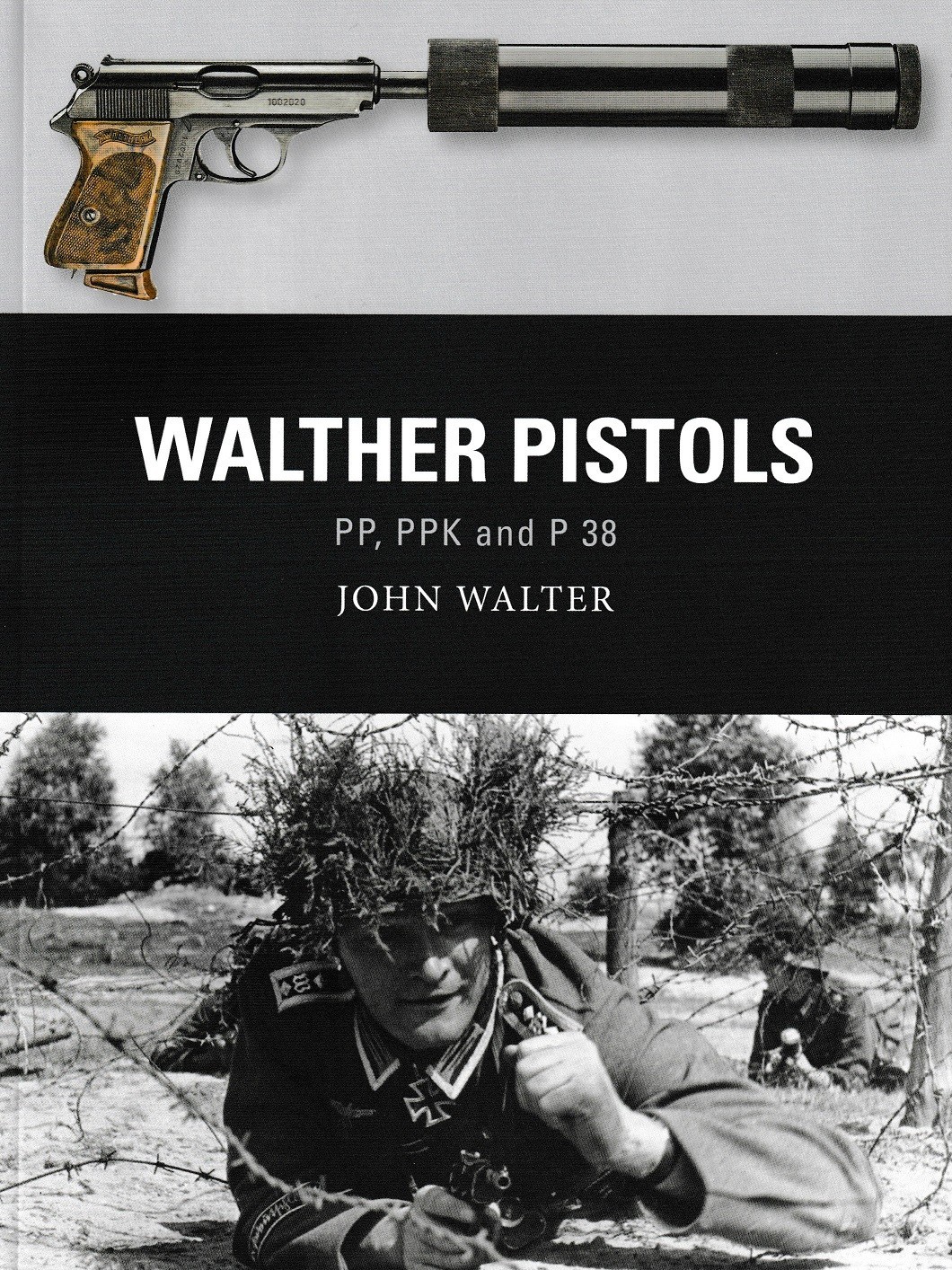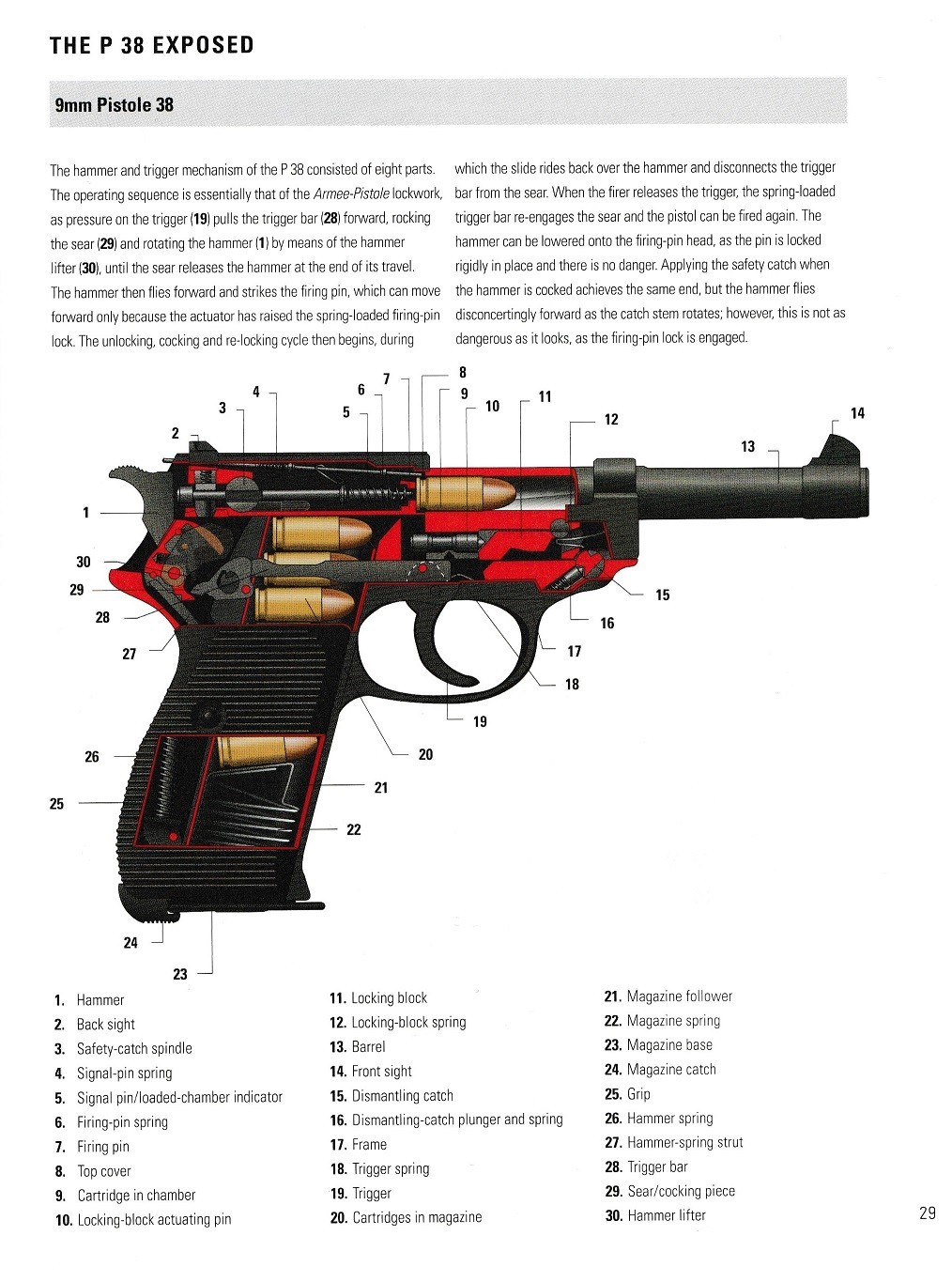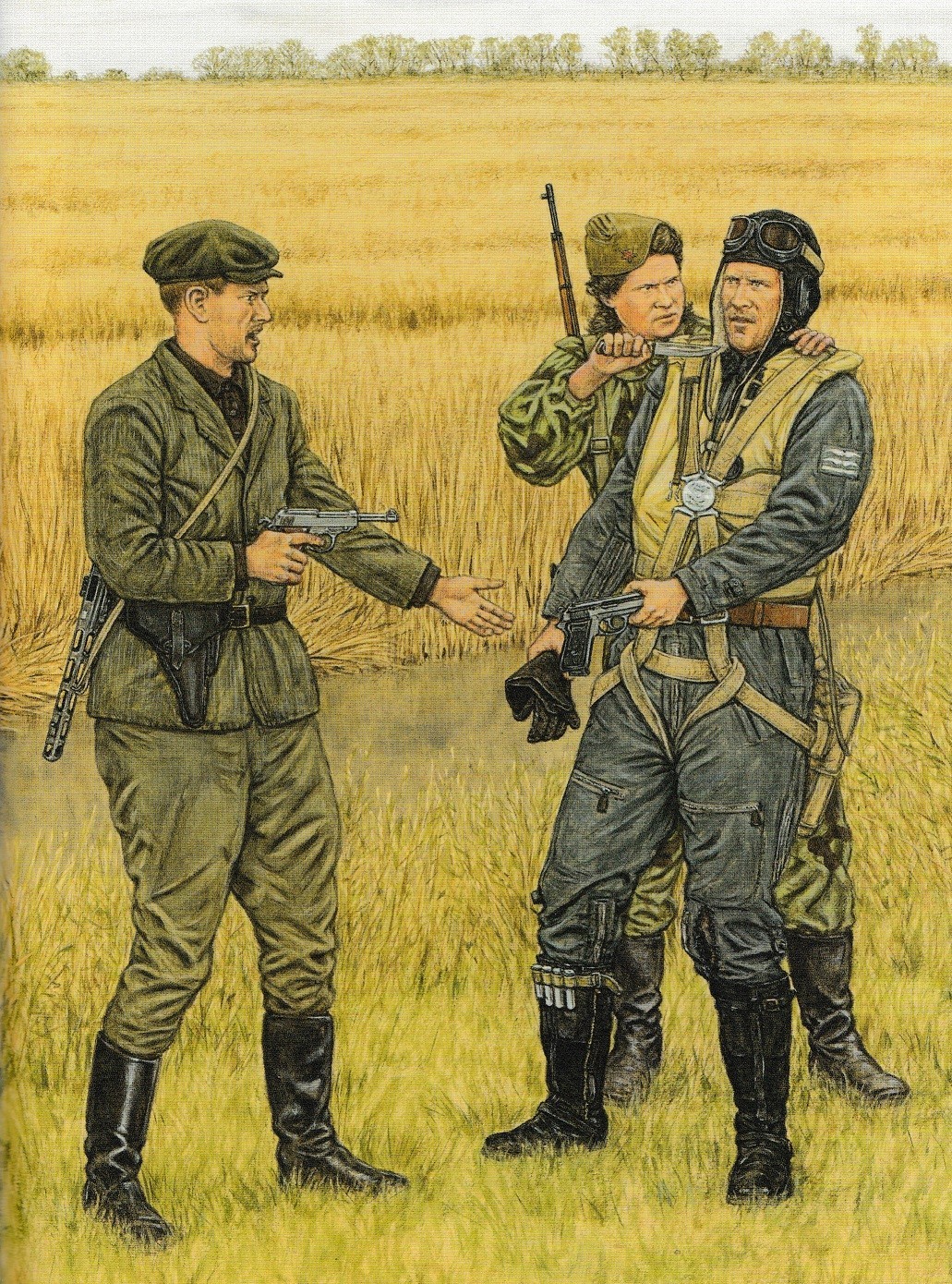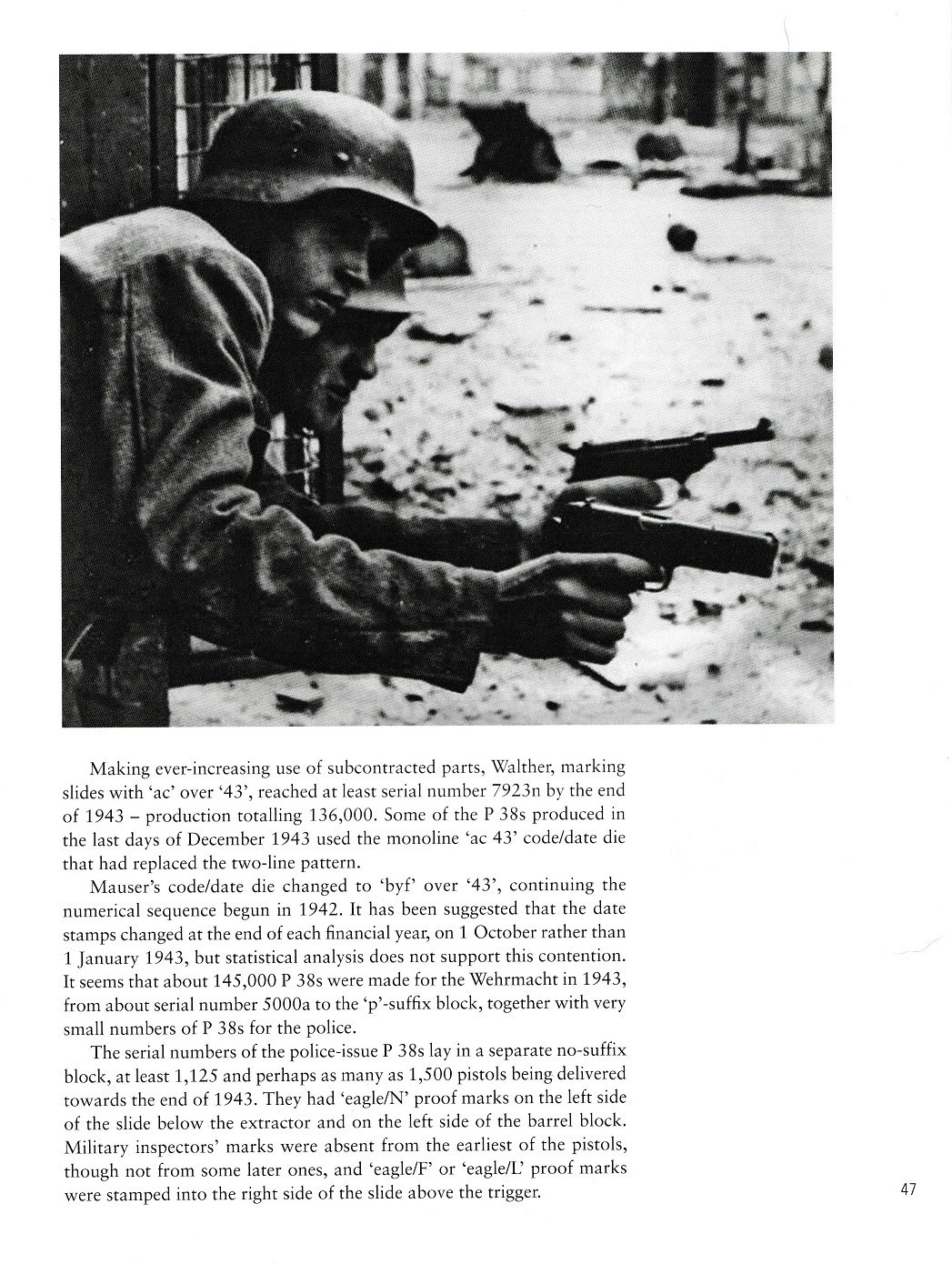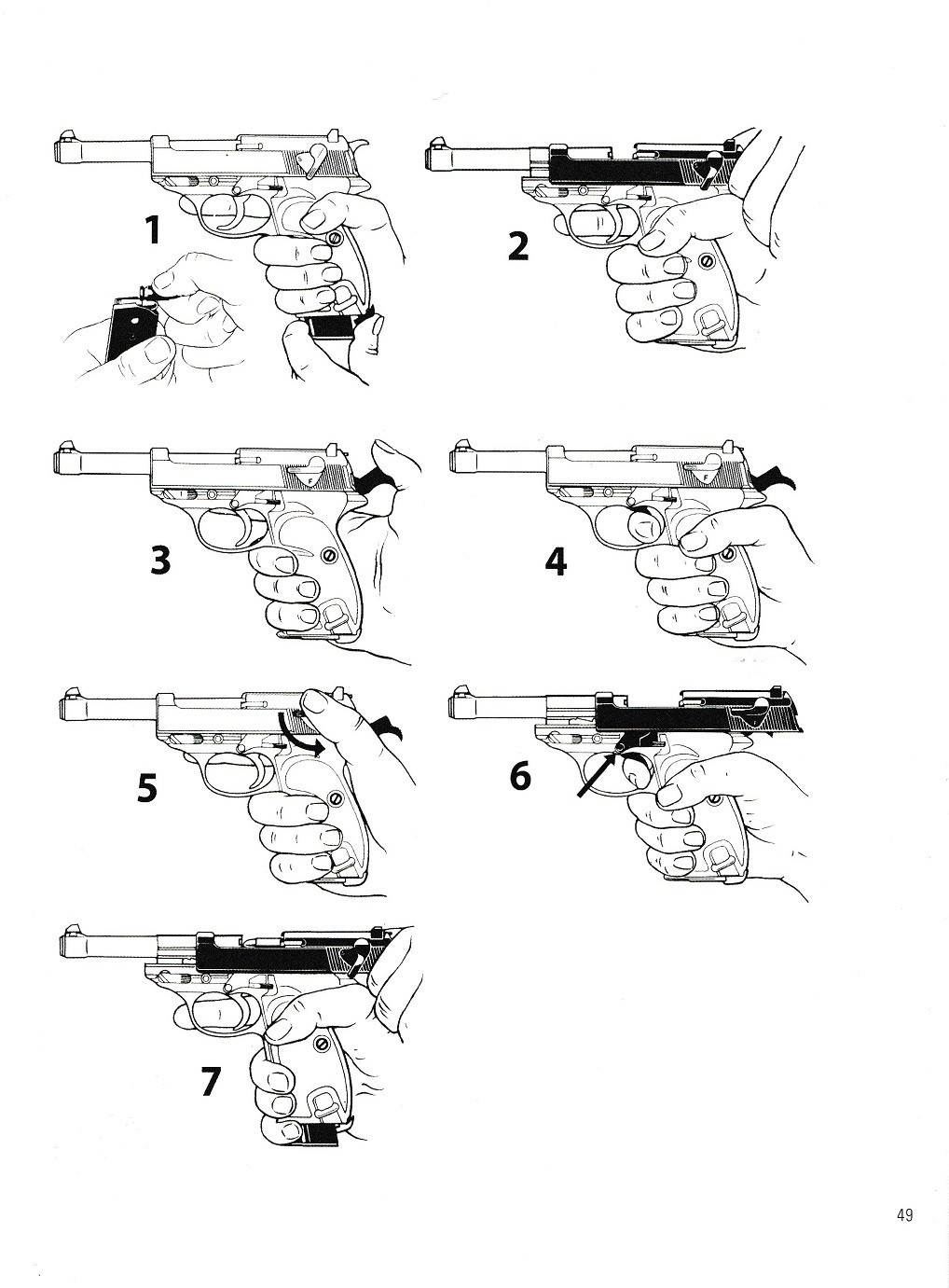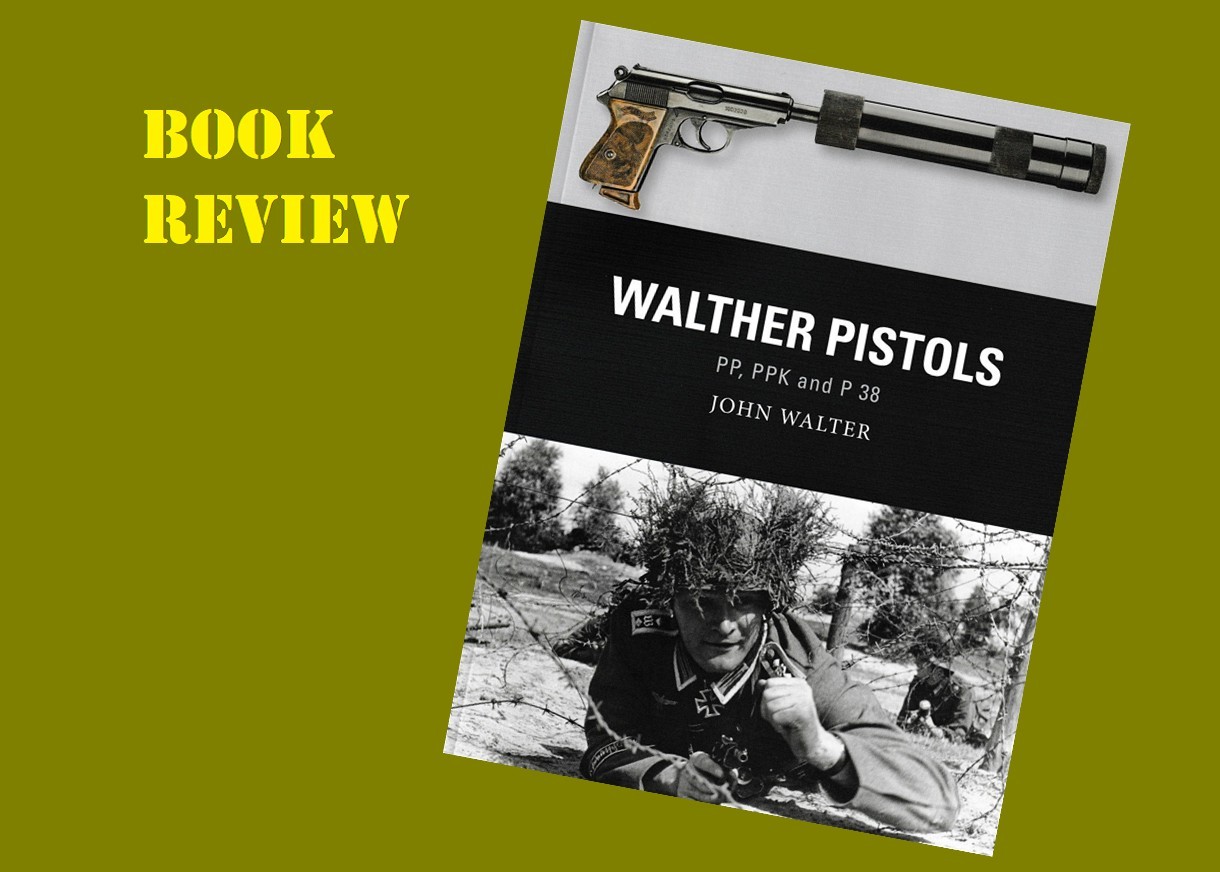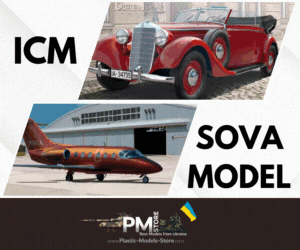HISTORY:
** This is the absorbing story of three innovative semi-automatic pistols produced by Walther, which have armed military and law enforcement personnel in Germany and elsewhere for nearly a century. The innovative Walther PP (Polizei-Pistole), a double action semi-automatic pistol intended for the German law-enforcement market, became available in 1929 and went on to arm the police of several European countries in the 1930s. Its smaller cousin the PPK, more readily concealed for undercover work but with reduced magazine capacity, was produced from 1931. Intended to replace the P08 Luger, the Walther P38 was issued from 1940 and equipped the armed forces of Germany and other countries during and after World War Two, but never entirely replaced the Luger in German service. All three pistols went on to have lengthy and varied service across the world after 1945; variants of the PP and the PPK remain in production today, while the P38 re-emerged as the P1 and equipped West German forces from 1963 until 2004, when it was replaced by the P8. In this study, noted authority John Walter assesses the origins, development, use and legacy of these three high profile semi-automatic pistols, alongside other Walther variants, such as the tiny .25 ACP Modell 9. **
** Quoted from the back cover of the book.
THE BOOK:
Osprey Publications has released Walther Pistols – PP, PPK and P 38 as Number 82 in the Weapon series. It is an 80-page soft cover book. Included with the text are black and white and color photographs, color illustrations, detailed captions, cutaway views and more. It has a 2022 copyright, a publication date of May 17, 2022, and the ISBN is 978-1-4728-5048-3.
THE CONTENTS:
- Introduction
- Development
- Tokarev, Degtyaryov and Goryunov
- Use
- Tactical fire support in total war
- Impact
- The transformation of Soviet firepower
- Conclusion
- Further reading
- Index
THE TEXT:
Author John Walter provides a well written text detailing the German Walther PP, PPK and P 38 pistols as well as other German pistols, before, during and after World War II. John Walter goes into specific features such as the type of alloy the specific weapon was made of, caliber of the weapon, how many rounds it would hold and details such as various manufacturers markings and their meanings, types of finishes used and engravings on specific weapons, types of materials that the pistol grips are made of such as wood or Bakelite as well as stating if the weapon was a single action or a double action and if it had an internal or external hammer. Other information is provided such as patent dates, the individual that invented the firearm, variations and numbers of each specific weapon designed and manufactured, where they were manufactured, faults that were discovered with some of the firearms and what was done to correct the faults and improvements that were made. John Walter also gives detailed information on who specific pistols were issued to such as officers, artillerymen, machine gunners, specialist troops such as the Fallschirmjäger (paratroopers), and pilots. In addition, there is information provided such as certain model types of pistols and the model of pistol that they replaced, operation and use of the specific pistols and details on accessories such as magazines, holsters and suppressors/silencers. John Walter provides an excellent description of all the technical specifications of the weapons and their accessories in an easy-to-read format which detail oriented readers will benefit from. I personally feel that John Walter has covered all areas and aspects of the specific weapons and left no area of the weapons undiscussed in detail. As I read through the text, I didn't notice any spelling or grammatical errors. Grammar and spelling might not be an important factor to everyone however it is something that I take notice of and pass on my findings. I feel that if the text is well written then it shows that the author has taken the time to be professional with their writing. Anyone wanting to add an excellent reference and history book on German Walther PP, PPK and P 38 pistols as well as other German pistols, before, during and after World War II to their personal library will be pleased with this informative and interesting book.
THE PHOTOGRAPHS:
A total of 8 black and white photographs and 45 color photographs are included in this volume. The photographs are for the most part close-up detailed photographs that are clear and easily viewable. The majority of the photographs are of just the weapons and accessories themselves as opposed to photographs that feature the weapons in a broad generalized military photograph that lack focus on the specific weapon and associated equipment, which in my opinion it makes it much easier to study the various weapons and their details. As well as showing the various weapons and their accessories, the photographs also provide excellent details such as the various uniforms being worn. The majority of the photographs are clear and easily viewable; however, a few of the black and white period photographs appear to be too dark, while others appear to be too light. This can be typical for the discussed period of history and the quality of the photographs is of no fault of the author and they do not take anything away from the book. Author John Walter stuck to the title of the book and chose subject specific photographs and did not include photographs that strayed from the main subject of the book. The majority, if not all of the photographs, will prove to be a wealth of information to anyone interested in German Walther PP, PPK and P38 pistols as well as other German pistols used before, during and after World War II due to the details that they contain.
THE ILLUSTRATIONS:
There are 2 black and white illustrations and 5 color illustrations with detailed captions included by illustrators Adam Hook and Alan Gilliland. The illustrations are very well done, nicely detailed and are of:
Plate A
German police encounter a looter, summer 1944
– A two-page color illustration depicting a German civilian who has been caught in the act of looting and stealing a painting and shooting his P08 Luger pistol at a uniformed German police officer (Ordnungspolizei) armed with a Walther P38 pistol and a German plainclothes police officer (Kriminalpolizei) armed with a Walther PPK pistol.
Plate B
Soviet forces capture a German pilot, summer 1942
- A one-page color illustration depicting a Soviet partisan armed with a German P38 pistol and a Soviet PPSh-41 submachine gun covers a German pilot who is surrendering his Walther PP pistol while a Soviet female sniper armed with a Soviet Mosin-Nagant M91/30 rifle holds a Finnish knife to the pilot's throat.
Plate C
Using the P38
– A black and white one-page illustration containing seven separate illustrations showing how to load, engage the safety, reload and unload a German P38 pistol.
Plate D
Using the PP Super
– A black and white one-page illustration containing seven separate illustrations showing how to load, engage the safety, reload and unload a German PP Super pistol.
Plate E
French troops engage the Viet Minh, 1949
- A one-page color illustration depicting a French soldier in French Indonesia aiming a French Mle 24/29 Châtellerault light machine gun at a Viet Mihn column while a French NCO armed with a US made M3 knife and a Post-World War II Walther P38 pistol gives him directions.
Cut-A-Way Illustrations
Plate A
The PP Revealed
– A one-page color cut-a-away view showing the internal workings of the German 9mm Polizei Pistole. Also provided is a key which details 31 specific items that are pointed out on the weapon.
Plate B
The P38 Exposed
- A one-page color cut-a-away view showing the internal workings of the German 9mm Pistole 38. Also provided is a key which details 30 specific items that are pointed out on the weapon.
THE CAPTIONS:
The captions are well written and explain the accompanying photographs and illustrations in great detail eliminating any doubt as to what is shown. The captions go into very specific detail as to the specific weapons shown, manufacturers markings, specific individuals, military units, associated equipment carried and used, specific items of interest, dates and locations and other such pertinent information. As I read through the captions, I didn’t notice any spelling or grammatical errors. John Walter’s captions will be helpful to the reader due to their detailed content as opposed to other captions that I have seen that are very brief and lacking in detail.
Osprey Publishing also offers Walther Pistols – PP, PPK and P 38 as:
eBook (ePub) ISBN: 978-1-4728-5080-5
and
eBook (PDF) ISBN: 978-1-4728- 5082-9
Osprey Publishing’s, Walther Pistols – PP, PPK and P 38 is also available as an electronic Kindle version through Amazon.com.
PRICE:
UK £14.99 / US $22.00 / CAN $29.00
This book was provided to me by Osprey Publishing. Please mention that you saw the book reviewed here on the KitMaker Network when you make your purchase. Thank you.
